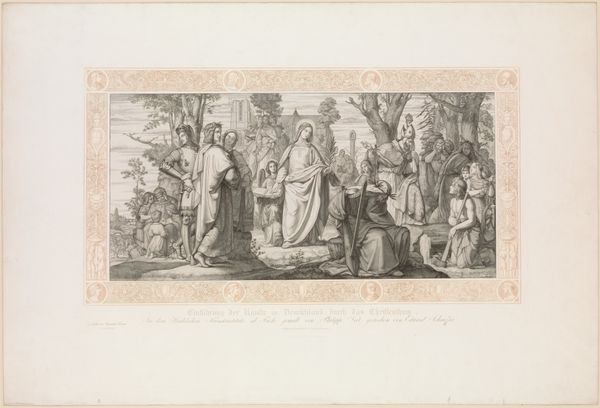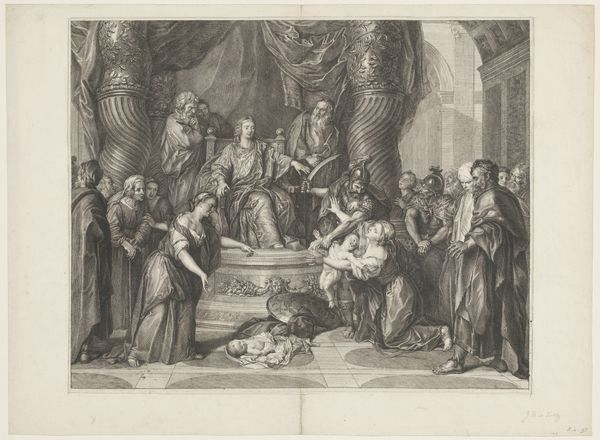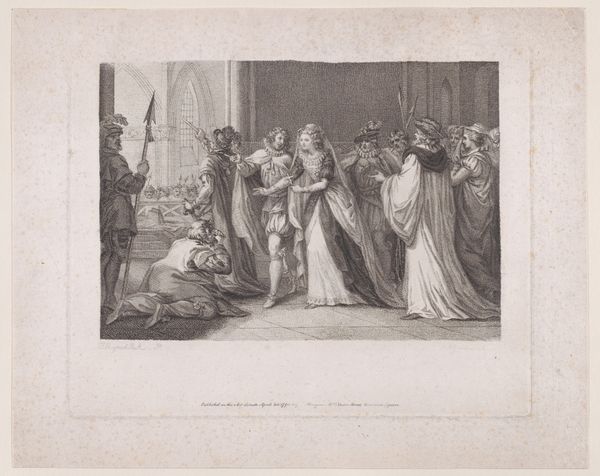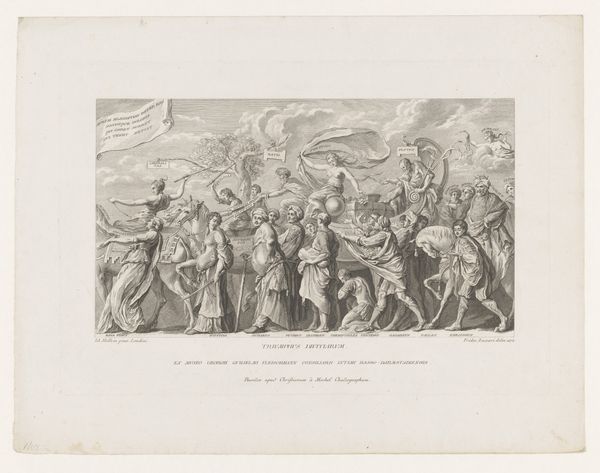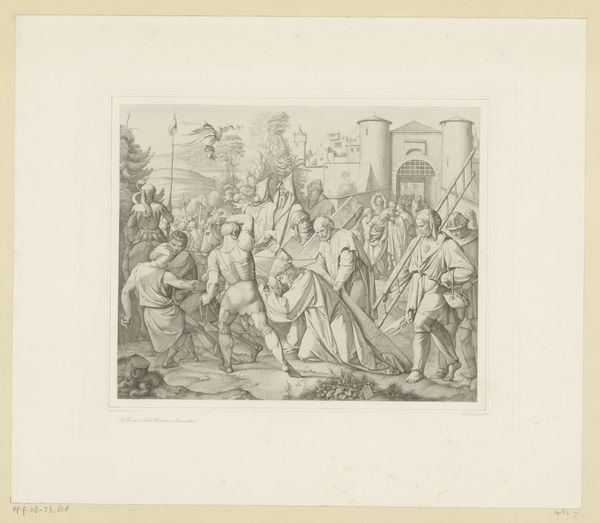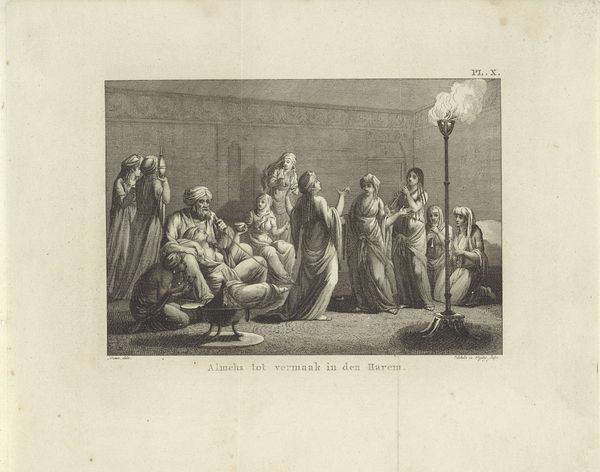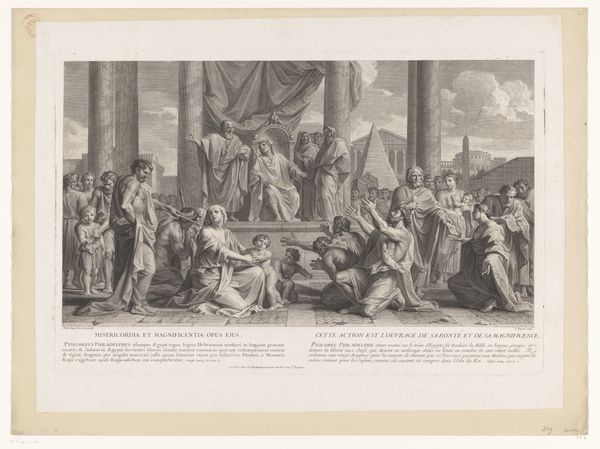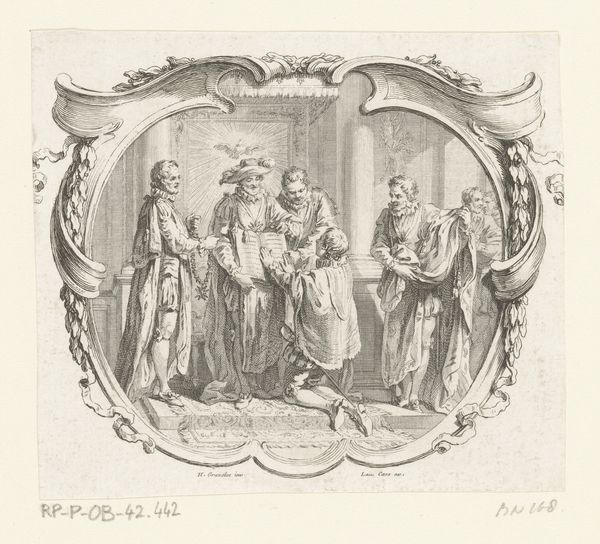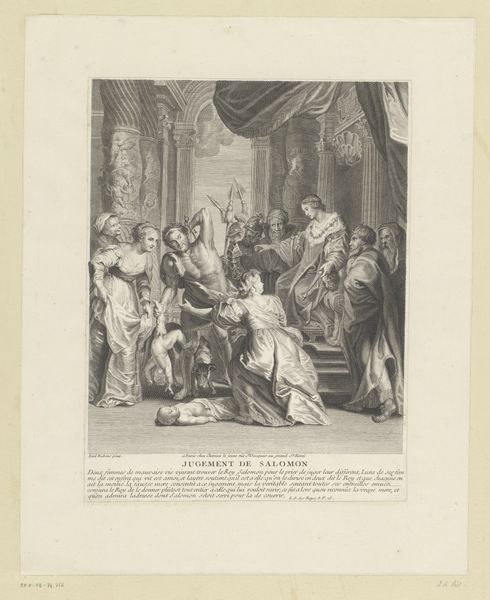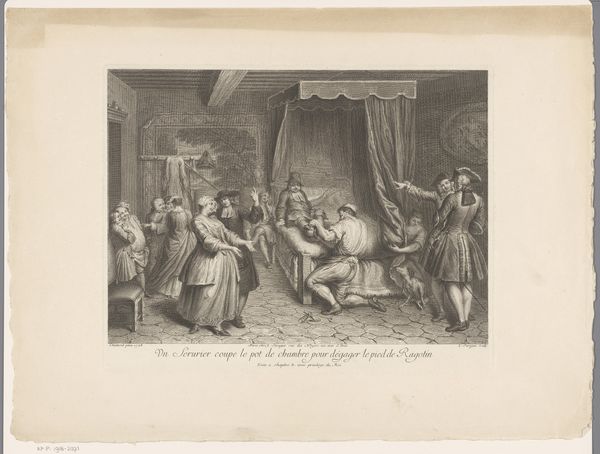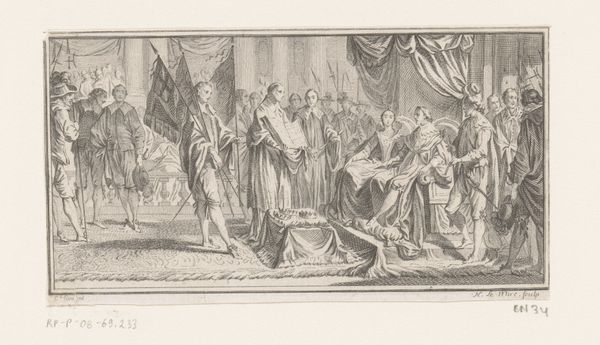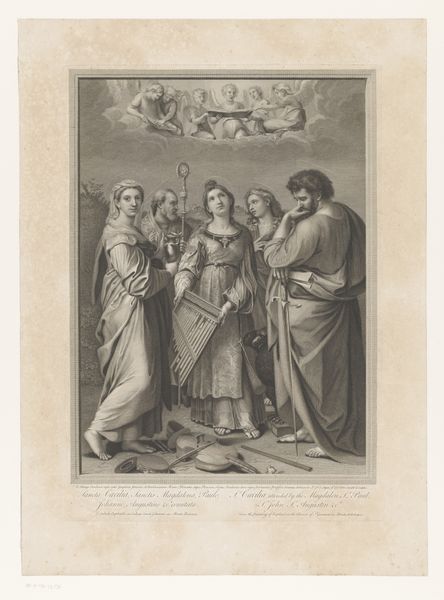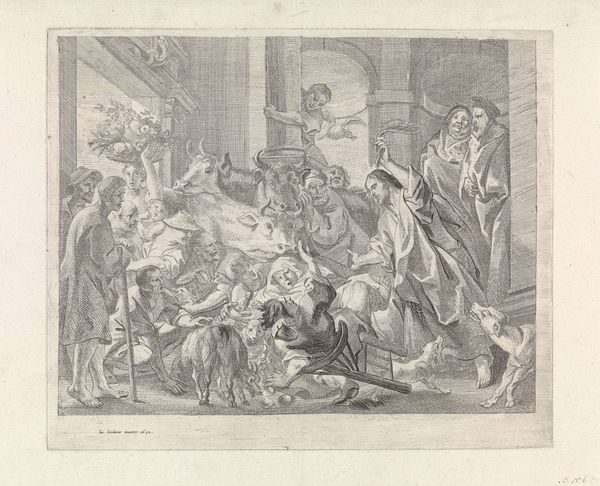
Dimensions: height 298 mm, width 828 mm
Copyright: Rijks Museum: Open Domain
Curator: Looking at this drawing, I’m immediately struck by its formality. The linear perspective and classical references give it a staged, almost theatrical feel. Editor: Indeed. The piece, created by William Haussoullier between 1863 and 1891, is titled “Gehuwd koppel te midden van een feest”, which translates to “Married couple amidst a feast”. Its depiction aligns with Neoclassical and Academic Art sensibilities prevalent during that era. What social dynamics do you read into the event pictured? Curator: It appears to be depicting a ritualised moment, potentially a marriage agreement, within a very stratified social order. The costuming and gestures read as symbolic, emphasizing traditional gender roles and class hierarchies. Observe the positioning of the figures relative to one another. It's not merely about the action itself, but who holds the power within the narrative. Editor: I am more attracted by the interplay between line and space, the carefully controlled gradation of tones achieved using only pen and ink on paper. Consider the arrangement of bodies, the clear structure of each figure carefully balanced against the surrounding negative space—it really draws my eye across the entire composition. Curator: I agree that it's visually captivating, but let’s unpack it. What are the racial and economic implications that lie behind these images of festivity? How might this event reaffirm the political authority and socio-economic structure during the mid- to late-19th century? The setting itself, with the architectural forms, signals the importance of lineage and authority. Editor: I cannot help but feel how deliberately Haussoullier used line weight to define form, directing our eyes and eliciting a specific interpretation that celebrates formal beauty and precise draftsmanship in this artwork. It makes you want to sketch, and it celebrates drawing for drawing's sake. Curator: Seeing art as fundamentally disconnected from lived experience does risk perpetuating inequalities that arise from issues of access and representation in visual culture. I wonder, if we don't reflect critically on such details, do we reinforce the established power relations we seek to transform? Editor: Fair point, and in conclusion, through your reading and mine, this pen drawing not only reflects a particular time and style, but allows for dialogues extending beyond formal analysis into complex social implications.
Comments
No comments
Be the first to comment and join the conversation on the ultimate creative platform.
